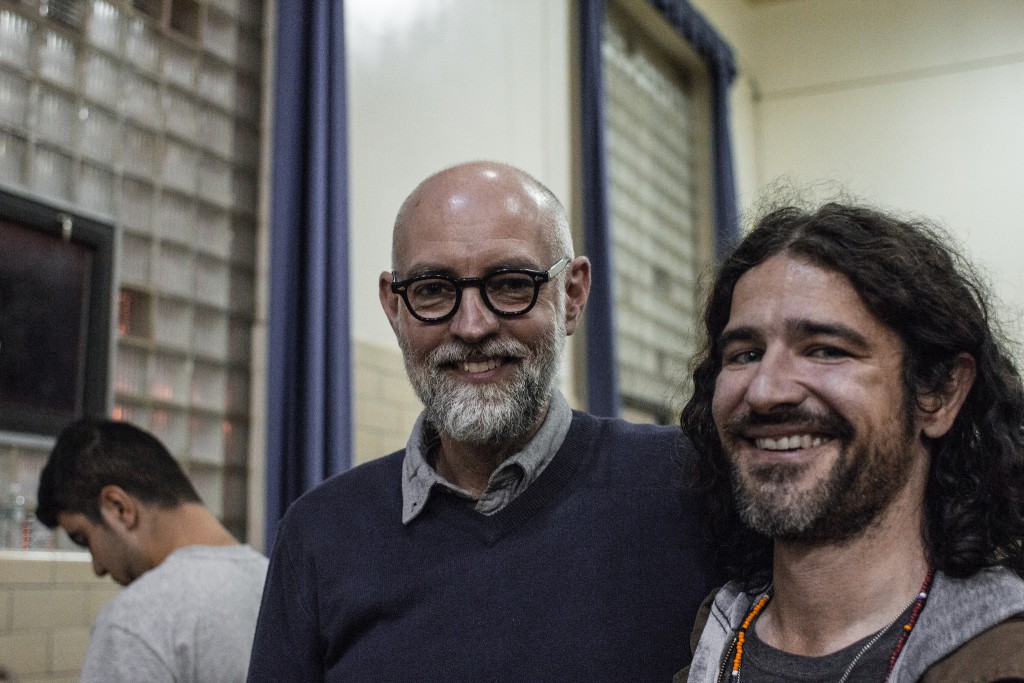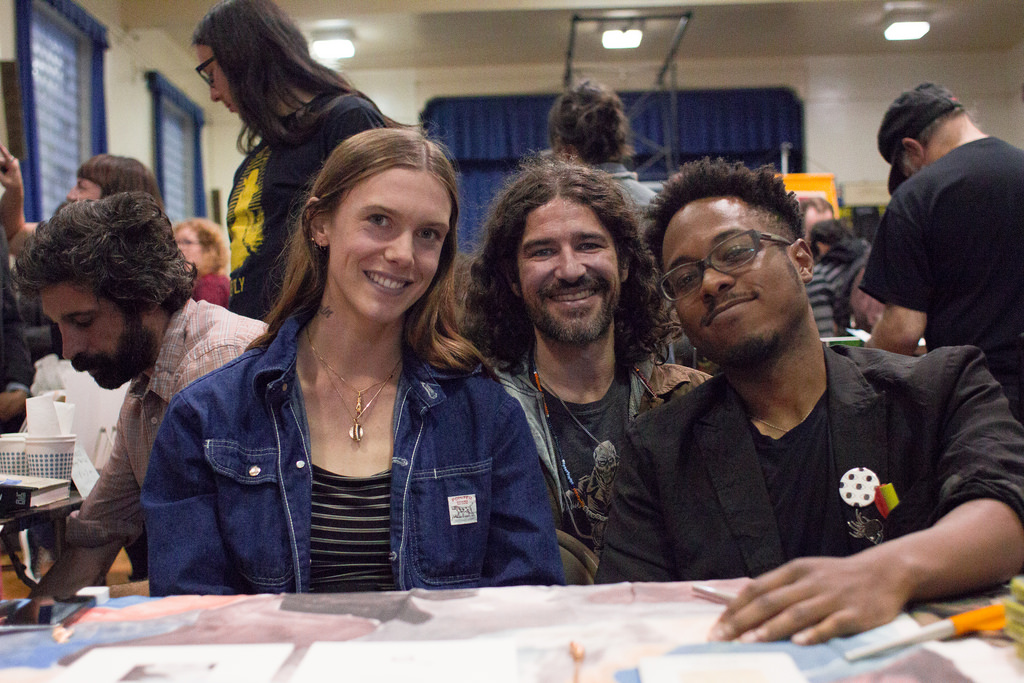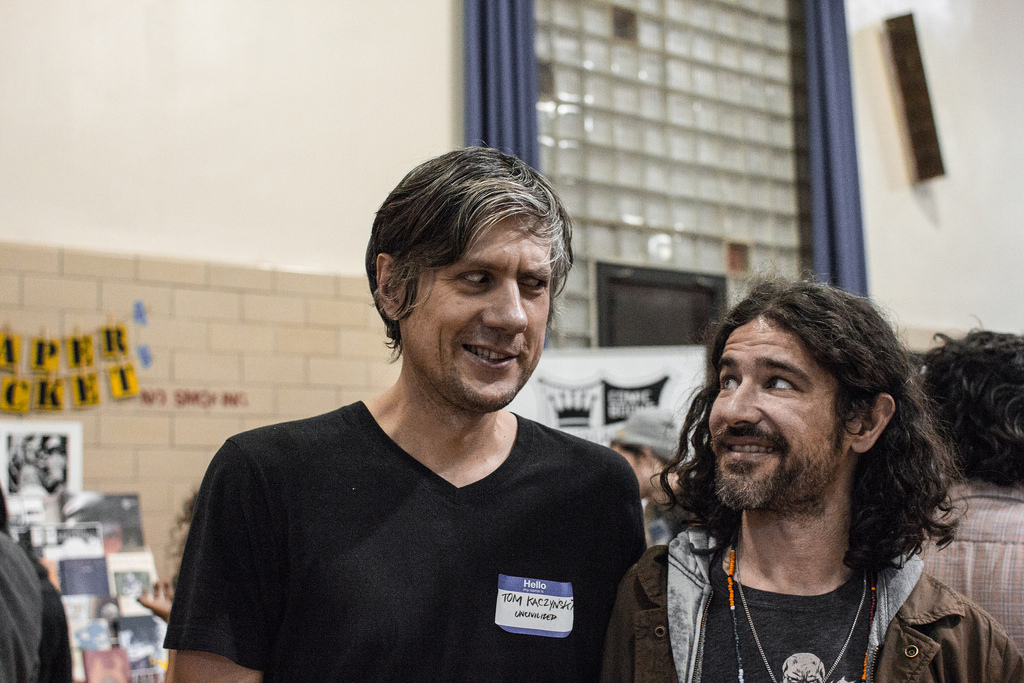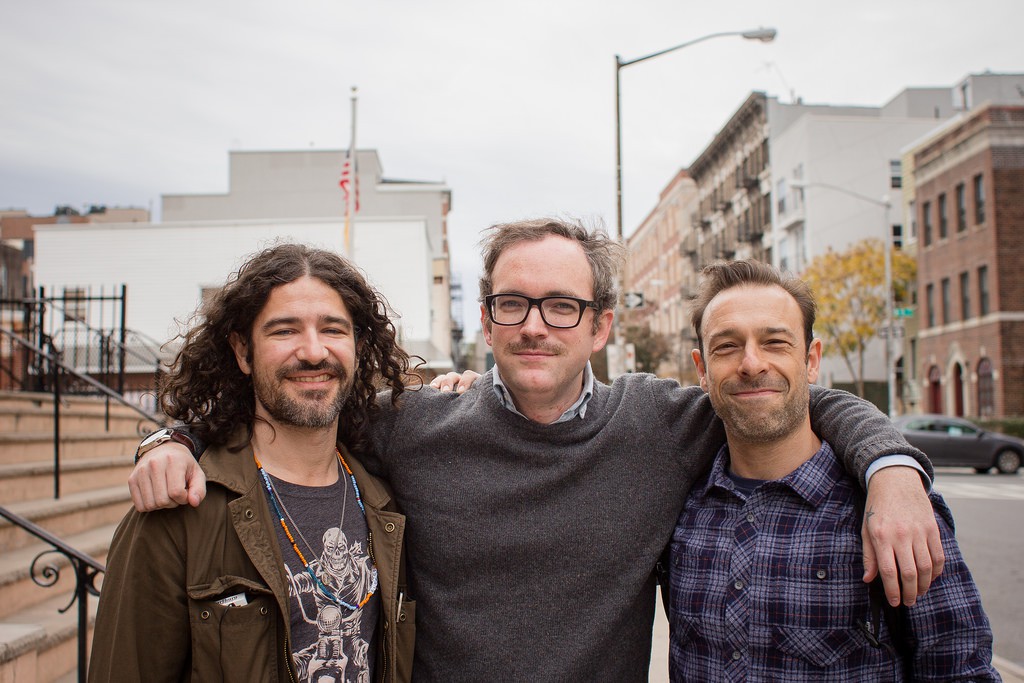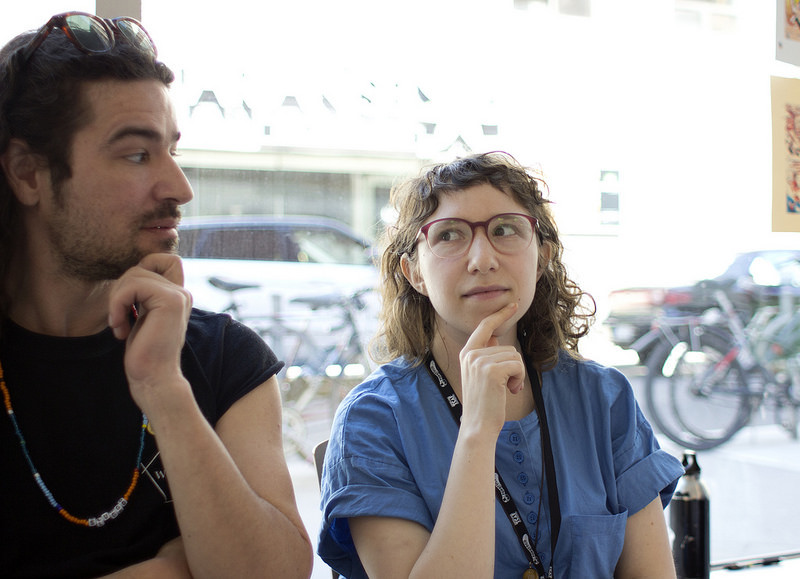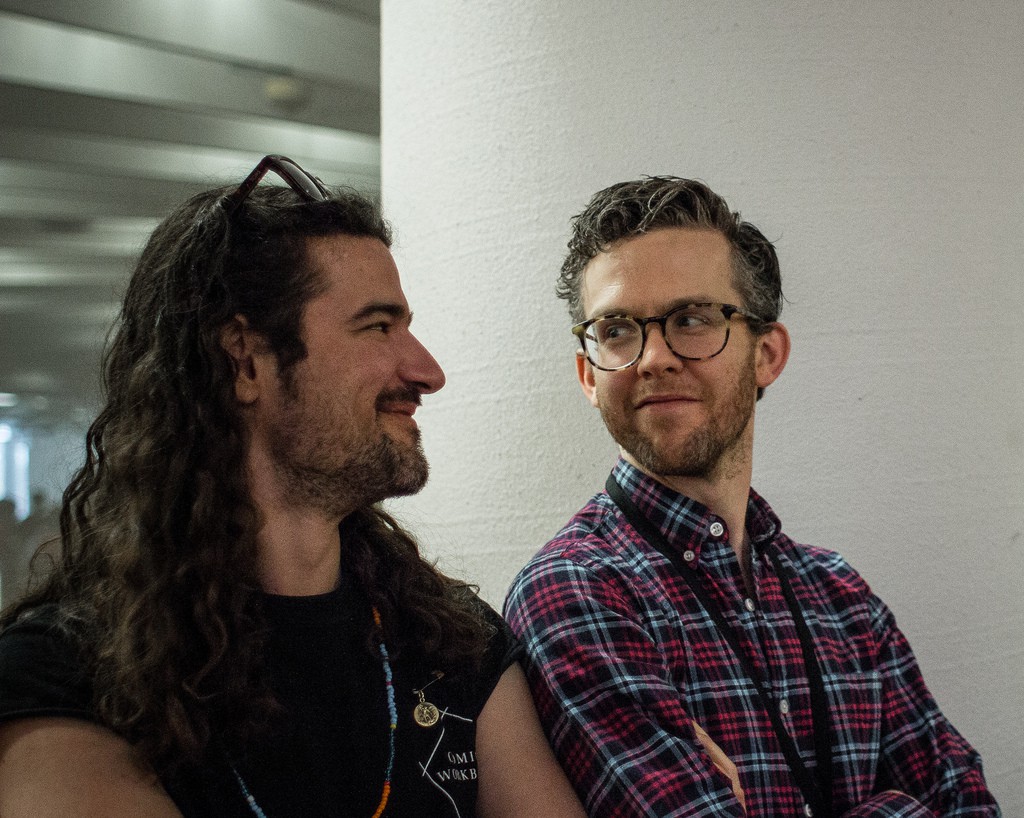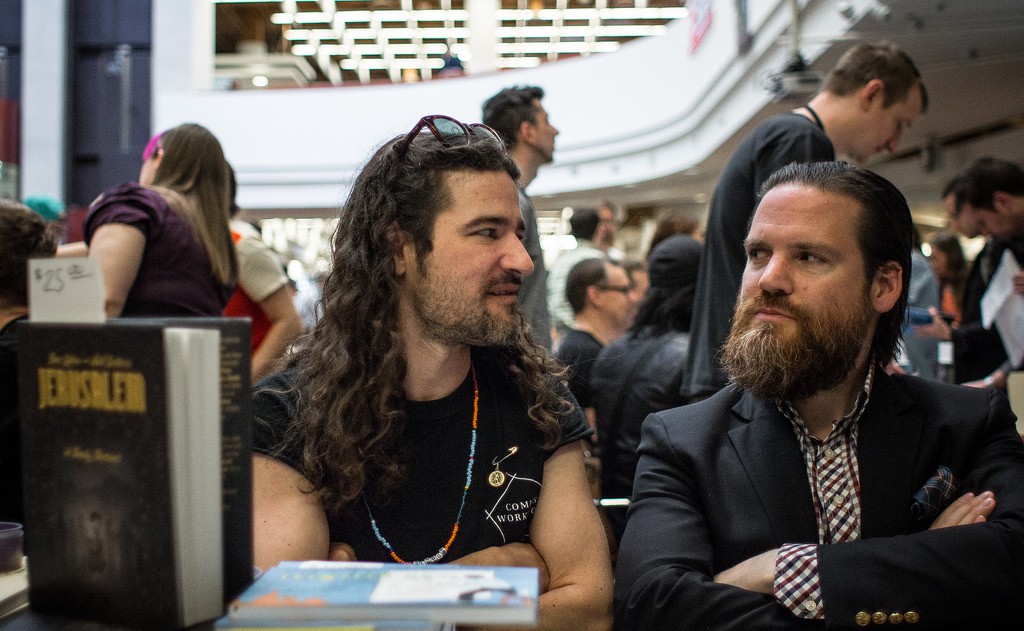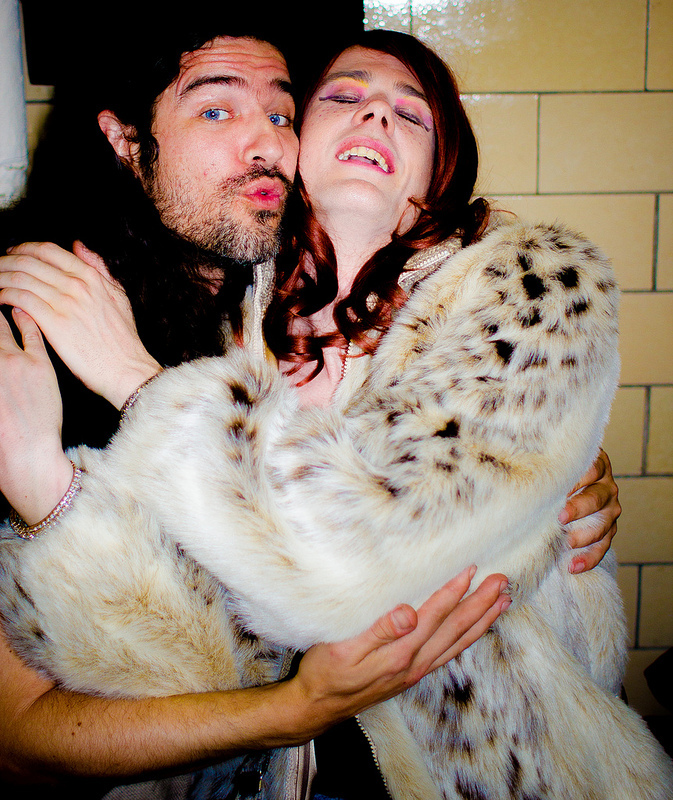Sally IngrahamJune 22, 2017NewsSam Ombiri brings thoughts on C.F.’s Powr Mastrs 3 – plus other links and comics for your Thursday!
—————————————————————————————————
Sam Ombiri here: I read Powr Mastrs 3 by CF very often. Very, very often. Even more often than Powr Mastrs 2, but that could just be a result of me lending it to someone else. Powr Mastrs is the type of book you lend to other people.
I’m more invested in Powr Mastrs 3 than 2, maybe as a result of the pace at which the characters are moving. The story doesn’t have a fast moving energy, but a slower more contemplative progression – not to say that this wasn’t the case for Powr Mastrs 2, it’s just there was only one real moment of action in 3 that I can think of. Only one complete, concrete, certain action that transformed the landscape of other events to come. So then, with 3 more so than 2, a certain weight is added to the momentum that was fueled by what had happened before 3. Of course I haven’t read 1 because I was kind of late to the party with CF.
He begins the book by telling those who mimic him to “follow your own star.” Can you, the reader, draw like CF does? The way he draws seems impossible. It’s a very stubborn way to draw.
He drew amazing characters – an amazing cast that you can imagine doing various things even before the story begins. So then it’s a real thrill to be seeing them moving in the story, mixing with your presumptions and what you imagined them to be like, and acting in accordance to their committed role.
The beginning with the Circuit Runner feels like, as the reader, you’re being told to travel with the Circuit Runner. The beginning hints to us about what will come to fruition. The characters are quiet before they address us. They occupy their own moments before they address the reader, if at all. The first person who addresses us is Jim Bored, who is stretching his imagination to his limits. He asks “what was entertainment?” while stuck in his prison in Mosfet’s lab. Really similar to like what we do with art and stuff I guess – I wonder what question CF is asking here?
Maybe it’s something about what symbolically happens when our deteriorating memory and alienated imagination reaches its limit. I felt that Jim Bored is still making stories that attempt to keep the mind going when trapped in an inescapable pit. Meanwhile, CF is drawing a reconstruction of perception after perception is lost or is slipping away.
New China is an easy place to navigate, thanks to the way CF guides the reader from panel to panel. One moment floating gently into the next moment without any scheme to rush, beyond what feels like the needed pacing. The reveals that happen are slow as we pan to some hidden factor in New China of some unrevealed element that hasn’t come fully into fruition but is sure to be big when it does. The people we meet in New China are reduced to a fetishization of action figures.
It’s a bit dizzying, the intense encounters with what feel like mirrors reflecting an energy present in our lives, but CF catches that energy in a jar and releases it in every page. The ways the characters look, and the way color comes in, is that similar feeling to when you’re a kid and the colors of packs of candy stick out to you, and part of the candy and enjoying the candy is the bright colors of the wrappers and the bags you rip – or all those cool action figures that you could never have and imagine playing with. – Sam Ombiri
Get a copy of Powr Mastrs 3 HERE.
—————————————————————————————————
6-22-2017 – by Sam Ombiri
—————————————————————————————————
Sally here – Ariell R. Johnson has been in business for over a year now, and her plans for Amalgam Comics & Coffee Shop are only getting grander. The Knight Foundation recently picked Johnson out of over 4,500 applicants to receive a grant of $50,000 – she will be expanding her space, and implementing more educational opportunities for the local community. Read more about her shop and her plans HERE.
—————————————————————————————————
There’s a review of Space Riders: Galaxy of Brutality #2 on Nothing But Comics – they write:
“I can’t say enough about Ziritt’s art, as it really is unlike any other style you see in comics now. It’s like the album art you saw on 70’s covers, bright and glaring, its subject matter seizing your eyes. On reflection, Ziritt’s style is like a spiritual continuation of Jack Kirby and Jim Steranko’s work in the 60’s. The bold body shapes, the sublime color combinations, and the geometric technology, it all was prominent in the heyday of comics and its mostly vanished in modern times.“
Read the rest HERE.
Get a copy of Alexis Ziritt’s and Fabian Rangel Jr.’s other new comic, Tarantula, HERE from AdHouse Books.
—————————————————————————————————
Work by Jim Pluk – he recently had a solo show in Mexico at the gallery TOBA. Check out more of Jim’s work HERE – and get a copy of his most recent comic Canosa’s Welcome HERE.
—————————————————————————————————
Frank was the guest on Episode 219 of of Brian Heater’s RiYL podcast:
“…unlike the Bay, his hometown is actually livable for an artist. In fact, he own two houses on the same street. The second, a mirror image of his own residence, is the headquarters of the Rowhouse Residency, an off-shoot of his long standing comics correspondence course that he likens to “a dojo for students much like a martial arts academy.” It’s an immersive school from which Santoro broadcasts lessons and publishes the work of the artist in residence, fueled by home cooked meals prepared by his mother who lives up the street. Santoro and I met up at his row house to discuss Pittsburgh comics, self-publishing and the shadow of Andy Warhol.“
Give it a listen HERE!
Learn more about the Comics Workbook Rowhouse Residency HERE.
—————————————————————————————————
Suzy and Cecil – 6-22-2017 – by Sally Ingraham
—————————————————————————————————
Joanie and Jordie – 6-22-2017 – by Caleb Orecchio
Share this page: [...]
